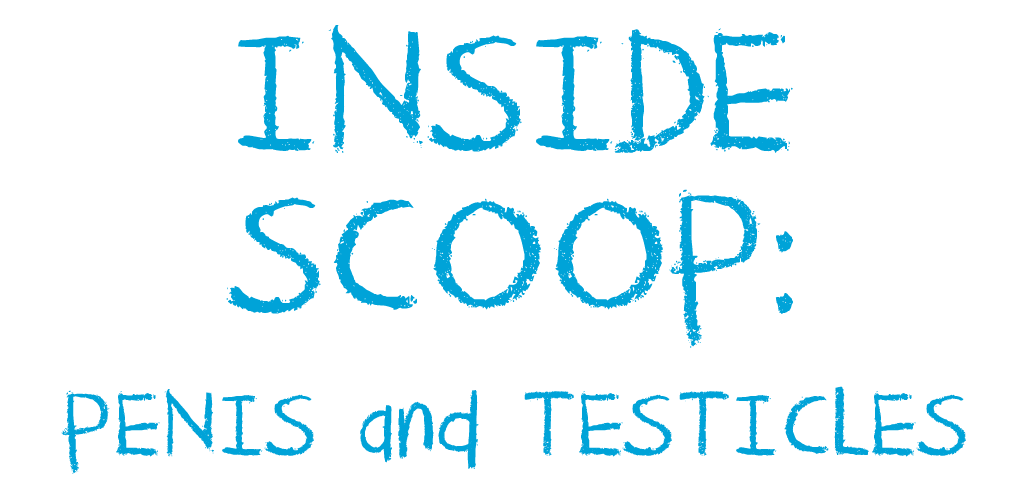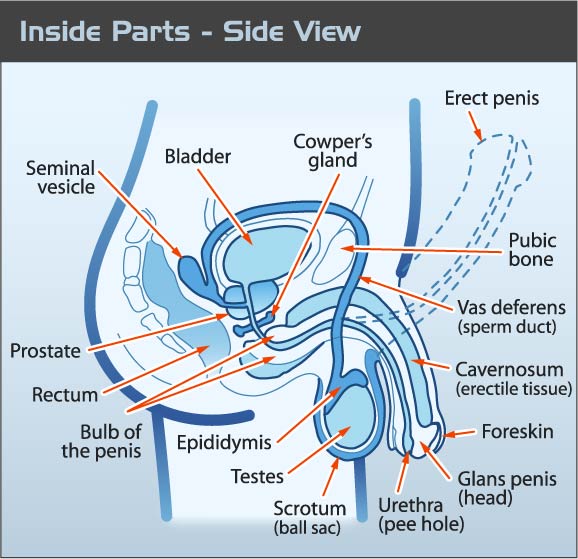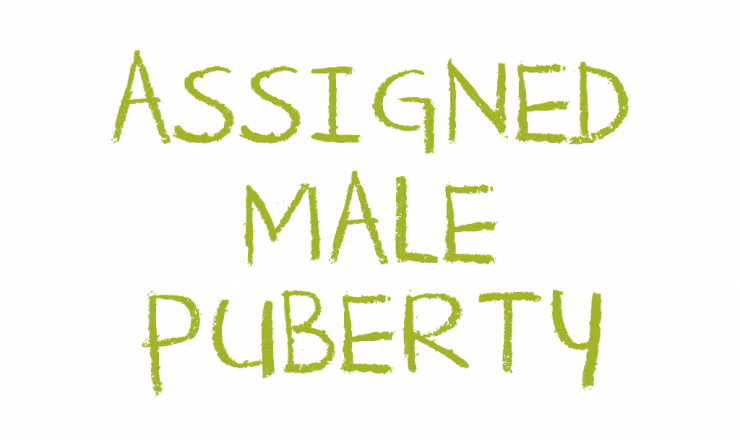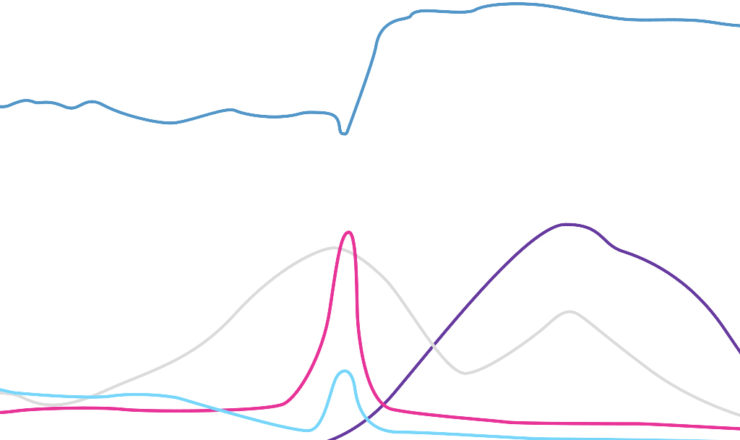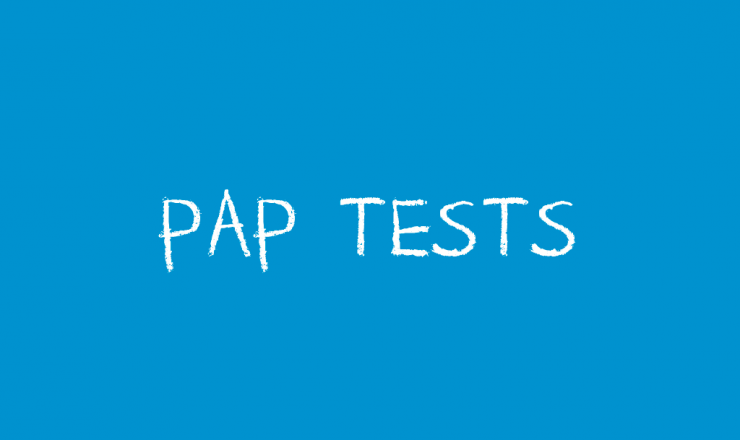Inside Scoop: Penis and Testicles
Bodies contain entire systems of internal 0rgans which work together for pleasure and for reproduction. When you are a teenager, these organs change and mature so they can begin to do their jobs.*
Have you ever wondered how all these internal organs fit inside your body? Read on!**
Testes (Balls)
- You have two testes inside the scrotum (ball sac).
- Your testes make sperm (reproductive cells) and testosterone (a hormone that stimulates puberty).
Epididymis
- Your epididymis is a short tube which connects your testicles to the vas deferens.
- Your sperm mature in the epididymis so they can swim to and fertilize an egg.
Vas Deferens
- Your vas deferens tubes connect each epididymis to your urethra.
- Your vas deferens contract to push and carry sperm forward in the urethra.
Seminal Vesicles
- Your seminal vesicles are two glands that are connected to your vas deferens.
- When your sperm swim by, they pick up some of the fluids needed to produce semen (cum).
Prostate Gland
- Your prostate is a gland that is the size of a walnut and connected to your urethra.
- When your sperm swim by your prostate gland, they pick up more of the fluids that go into making semen (cum).
- Some people find that it feels good to touch or stimulate the prostate gland through the butt.
Cowper’s Glands
- Your Cowper’s glands are two glands that make pre-ejaculate (pre-cum).
- Pre-cum is the clear fluid that comes out of your penis when you get aroused.
- Pre-cum helps make a safe path for your sperm to travel along when you ejaculate (cum).
- Pre-cum usually doesn’t contain sperm, but it can carry sexually transmitted viruses and bacteria.
- Pre-cum may contain sperm if it there is sperm from a previous ejaculation in the reproductive tract that it picks up as it travels along the urethra.
Cavernosum
- Cavernosum is erectile tissue that fills with blood and makes your penis get hard during an erection.
If you have questions about this topic, feel free to contact one of our peer educators. [Link]
*Not everyone experiences or relates to their penis and testicles in the same way or uses the words used on this page for their bodies. We support you using the language that feels best for you.
**Please note that not all of the information on the page applies to all bodies. This is especially true for folks who are born with intersex conditions. Intersex people are born with sex characteristics (including genitals and chromosome patterns) that do not fit typical binary notions of “male” or “female” bodies. For more information on intersex conditions, please see Rainbow Health Ontario’s Intersex Health Page (here) or the United Nations Human Rights Office’s factsheet (here).
Last Edited: October 2020

